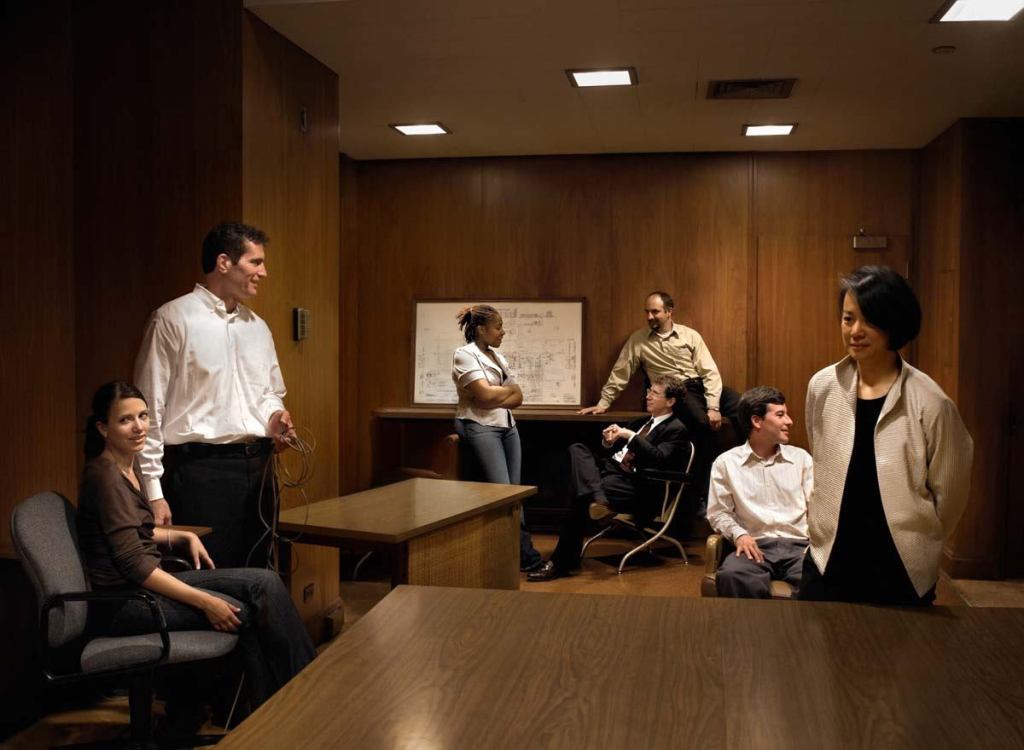There’s a certain beauty to numbers. Not only do they bring order to chaos, they also help explain complex issues in finite terms. For this first issue, ARCHITECT set out to get a statistical fix on the profession. A seemingly simple task, you’d think, but one that assumes the numbers exist—and they don’t.
The U.S. Census, typically the ultimate source for demographics, makes no distinction between architects and landscape architects. The professional organizations maintain data only about their own constituencies: the AIA counts membership, while the National Council of Architectural Registration Boards tracks licenses and registrations.
In 2004, the AIA resolved to rectify the situation, adopting a landmark initiative to determine the demographics of the profession at large. With the AIA’s research in but the first of several phases, ARCHITECT took an alternative approach.
Trading the quantitative for the qualitative, ARCHITECT gathered in Chicago with a group of academics and practitioners from different regions of the country and steps on the career ladder. We asked them to share their personal goals and their perceptions of the state of the profession.
What emerged was something greater than seven individual points of view. The participants collectively exhibited a remarkable regard for the responsibilities of architecture—to the client, to the environment, and to society as a whole. None of them equated job satisfaction with celebrity.
Opinions confirm something that numbers can’t: Architecture has a healthy conscience.
Renée Cheng
Age: 43
Associate Professor and Department Head College of Architecture and Landscape Architecture University of Minnesota
Minneapolis Having attended Harvard College and the Harvard Graduate School of Design, Renée Cheng thought she was destined for an East Coast career in the fast lane. What she didn’t know was that her passion for teaching would eventually outpace her passion for practice. Today, she designs curricula rather than buildings.
Cheng’s educational philosophy derives from Bauhaus great Josef Albers, who believed that the role of education was to help students see the world differently. As Cheng sees it, her obligation is as much about preparing future architects for practice as it is about making them great thinkers.
The mindset of both practice and the academy has changed since the roaring ’80s, when Cheng was in school, moving away from corporate good to public and environmental good.
For Cheng, her own value system has changed too: “Success is creating something really great,” she says, “whether it’s a family, an educational opportunity, or a building, and making it with integrity, beauty, and joy.”
John Hartmann
Age: 33
Co-founder and Principal
Freecell
Brooklyn, N.Y. John Hartmann understands the value of a diverse practice. With Lauren Crahan, his partner in the firm Freecell, Hartmann practices architecture on a physical level rather than a strictly theoretical one. This means getting his hands dirty and expanding the typical designer’s scope of services to include fabrication and construction. In Freecell’s Brooklyn studio, CAD stations compete for floor space with a table saw and a MIG welder.
The firm’s mission lies somewhere between industrial design, architecture, and social reform, and its client base is eclectic enough to require it all. For Project Bookmobile, a nonprofit with noble intentions but meager funding, Freecell designed and fabricated the interior of a vintage Airstream trailer that brings artists’ books and zines to communities throughout North America. Hartmann explains, “We see this as our role: to be socially and morally active in what architecture is and how powerful it can be, even on a small level.”
